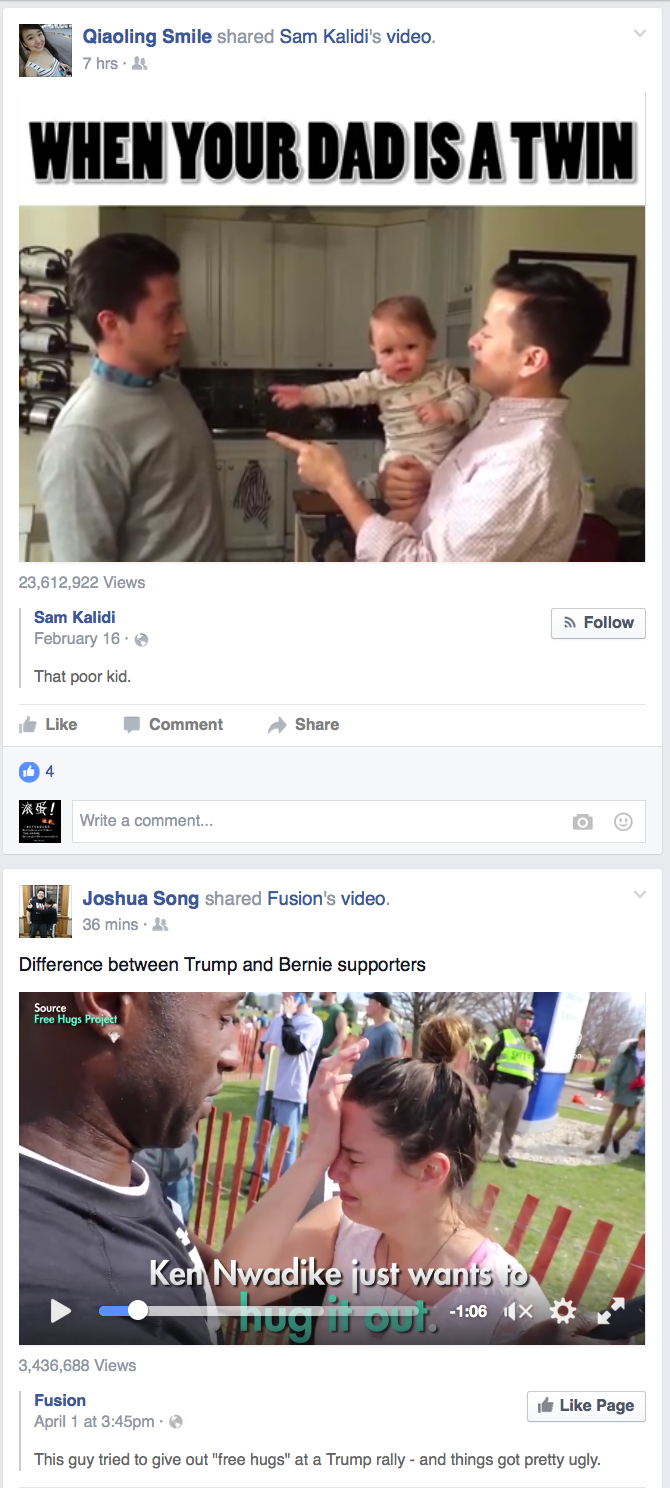Long time ago, when social media first popped up into the Internet world, we were enthusiastic about the content and the stories told. Texts, images, and videos were fair games for users. Today, images were still popular in social media sites. Pinterest use images as the major language that communicates with its audience, so is Instagram. This phenomenon is not surprising as visual aids often delivers more clear and stronger voice compared to texts. Therefore, it is also not surprising that words has often lost its popularity and authenticity in the evolving process of internet marketing.
At the mean time, video content usage has been rising across different social media sites. For example, instead of posting detailed recipe, Facebook account “Tasty” decided to post videos to show the cooking method step by step. It is certainly more interesting and understandable for audience to follow. Also, the colorful scenes engage people to finish the entire video even if they are not necessarily interested in that particular dish or recipe.
Take a step back and look at my Facebook Home page, videos show up in over 70% of the contents. They spread out in different forms: news, DIY videos, comedian videos, and other short documentary videos that call for awareness and actions. We did not care much about texts, rather we are so used to gather information from videos.
Studies have shown that one video content could keep people engaged on a specific website for two more minutes on average. Business also realized the importance of videos into online marketing and message delivery. “A picture is worth 1,000 words, while a one-minute video is worth 1.8 million words!” (Harrison, 2016).
As an audience, I love videos due to the clear message and engaging visuals. But sometimes, I had to avoid watching them when I am not available to play it right away. I am currently running a social media platform for a campus student organization, too. We always think about ways to spread our words and promote our events. Making a video is interesting. However, we did find it sometimes difficult to fit it in the event or we worried that people would not have the time to watch a 2 to 3-minute video.
Ultimately, I do have the questions from time to time: do people really like watching videos more than reading texts or images? Is video a good choice in serving any kind of marketing or sales purpose? What are some of the restrictions or possible drawbacks videos could bring?
References:
Harrison, Kate; Is Your Company giving Video The Love It Deserves? http://www.forbes.com/sites/kateharrison/2016/03/31/is-your-company-giving-video-the-love-it-deserves/#5dcbf75d71bf



9 Responses to Ultimately, why do we like watching videos?